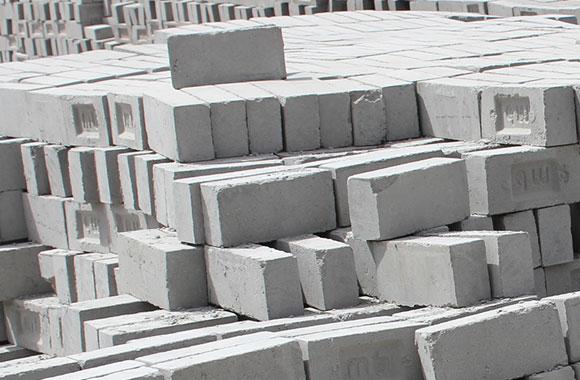Recycled Metals
Metals are extracted from nonrenewable ores. Recycled metals capitalize on already extracted materials—making it possible to produce goods more efficiently, reduce the need to extract new resources, and cut down on energy and water use.
Reduced/Sequestered
2020–2050
To Implement
Operational Savings
Impact
Recycled metals are estimated to increase from 39 percent of the market to 41–48 percent of a growing market for metals production, saving 4.31–12.34 gigatons of carbon dioxide equivalent emissions between 2020 and 2050.
Introduction
Project Drawdown defines the Recycled Metals solution as the bulk production of metals (not end-use) goods from recycled materials, replacing production from virgin materials extracted from ores.
Materials production is a significant contributor to greenhouse gas emissions. As consumption increases, so does the environmental footprint of extraction per unit of material. Production of metals from ore has shifted to lower ore grades that require more energy to extract and process. Production from recycled materials requires less energy than production from ore and so has a lower greenhouse gas footprint.
Methodology
To quantify the benefits of the Recycled Metals solution we 1) generated a total addressable market forecast of the metals market for 2020–2050, 2) forecasted a set of adoption scenarios and compared them with a reference scenario that fixed adoption at its current percentage of the market, and 3) compared scenarios to determine the relative emissions and costs.
Total Addressable Market
The total addressable market consists of the number of million metric tons of metals demanded globally. This includes all technologies and practices that provide the same function, including both virgin and recycled metals. We used projections for global metal demand from a variety of sources in our analyses.
We collected total addressable market scenarios for virgin and recycled metal production in future years from external sources and incorporated them into the model to create a range of possible futures.
We took historical total addressable market data from global production reports in the USGS Mineral Yearbook. We developed future total addressable market growth scenarios using a linear regression analysis of the historical data and projected metal production from growth rates from Elshkaki et al. (2018), Van der Voet (2019), and a Materials Economics (2018) assessment of circular economy scenarios of various materials, including metals.
Adoption Scenarios
We developed two types of scenarios: a reference scenario and a set of adoption scenarios with varying levels of adoption of metal recycling. The reference scenario assumed adoption remains constant at the current rate of 39 percent from today to 2050.
We calculated impacts of increased adoption of the Recycled Metals solution from 2020 to 2050 by comparing two scenarios with the reference scenario.
-
Scenario 1: Production from recycled feedstocks increases to 2,081.84 million metric tons (41 percent of the total addressable market).
-
Scenario 2: Production from recycled feedstocks increases to 2,403.62 million metric tons (48 percent of the total addressable market).
Emissions Model
We collected the climate impacts of the materials and processes associated with the Recycled Metals solution for several individual materials and processes, then compiled them into composite functional units with the following definitions:
Conventional functional unit: 1 million metric tons of primary production
Solution functional unit: 1 million metric tons of secondary production
Results
Scenario 1 projects a potential emissions reduction of 4.31 gigatons. The net first cost to implement is US$0, and the lifetime net operational cost is US$1.39 trillion.
Scenario 2 projects a potential emissions reduction of 12.34 gigatons. The net first cost to implement is US$0, and the lifetime net operational cost is US$3.70 trillion.
Discussion
Metals, though theoretically infinitely recyclable, have technical recycling limits due to introduction of impurities, dissipation, quality degradation, and other factors. Technical and financial obstacles to collection limit metal recycling and adoption of secondary production. Collection is expensive and difficult, and the separation of raw materials is often design-limited. For many materials, such as e-waste, component separation is expensive and often incomplete, resulting in impurities in recycling streams that make them less suitable for recycling.
Despite these limitations, this analysis indicates that even small improvements of metal recovery for recycled metal production can significantly reduce greenhouse gas emissions. For example, increasing secondary production from 39 percent to 41 percent of the total market over the next 30 years, which seems quite feasible given the expansion of recycling programs globally, could save more than 4 gigatons of carbon dioxide equivalent emissions. Increasing secondary production to 48 percent over the same time period would reduce greenhouse gases by more than 12 gigatons. These savings could make a significant contribution to meeting global warming control goals.
Beyond reduction of greenhouse gas emissions, reusing metal materials has other significant environmental benefits. It reduces land disruption, soil and water pollution, and ecosystem impacts of mining. It also can yield social benefits by reducing health harms and child labor associated with some metals extraction.
References
Elshkaki, A., Graedel, T. E., Ciacci, L., & Reck, B. K. (2018). Resource Demand Scenarios for the Major Metals. Environmental Science & Technology, 52(5), 2491–2497. https://doi.org/10.1021/acs.est.7b05154
Materials Economics. (2018). The Circular Economy—A Powerful Force for Climate Mitigation. https://materialeconomics.com/publications/the-circular-economy
USGS Minerals Yearbook - Metals and Minerals. National Minerals Information Center. Retrieved Jan, 2022, from https://www.usgs.gov/centers/national-minerals-information-center/miner…
Van der Voet, E., Van Oers, L., Verboon, M., & Kuipers, K. (2019). Environmental Implications of Future Demand Scenarios for Metals: Methodology and Application to the Case of Seven Major Metals. Journal of Industrial Ecology, 23(1), 141–155. https://doi.org/10.1111/jiec.12722
What You Can Do
Ensure that your community has good access to metals recycling infrastructure – not just aluminum and food can bins, but scrap metal as well.
Promote the climate benefits of metals recycling in your school or at your workplace.
- Expand your knowledge by exploring another Drawdown solution.
Co-benefits
Recycling metals reduces habitat destruction and pollution from mining.










